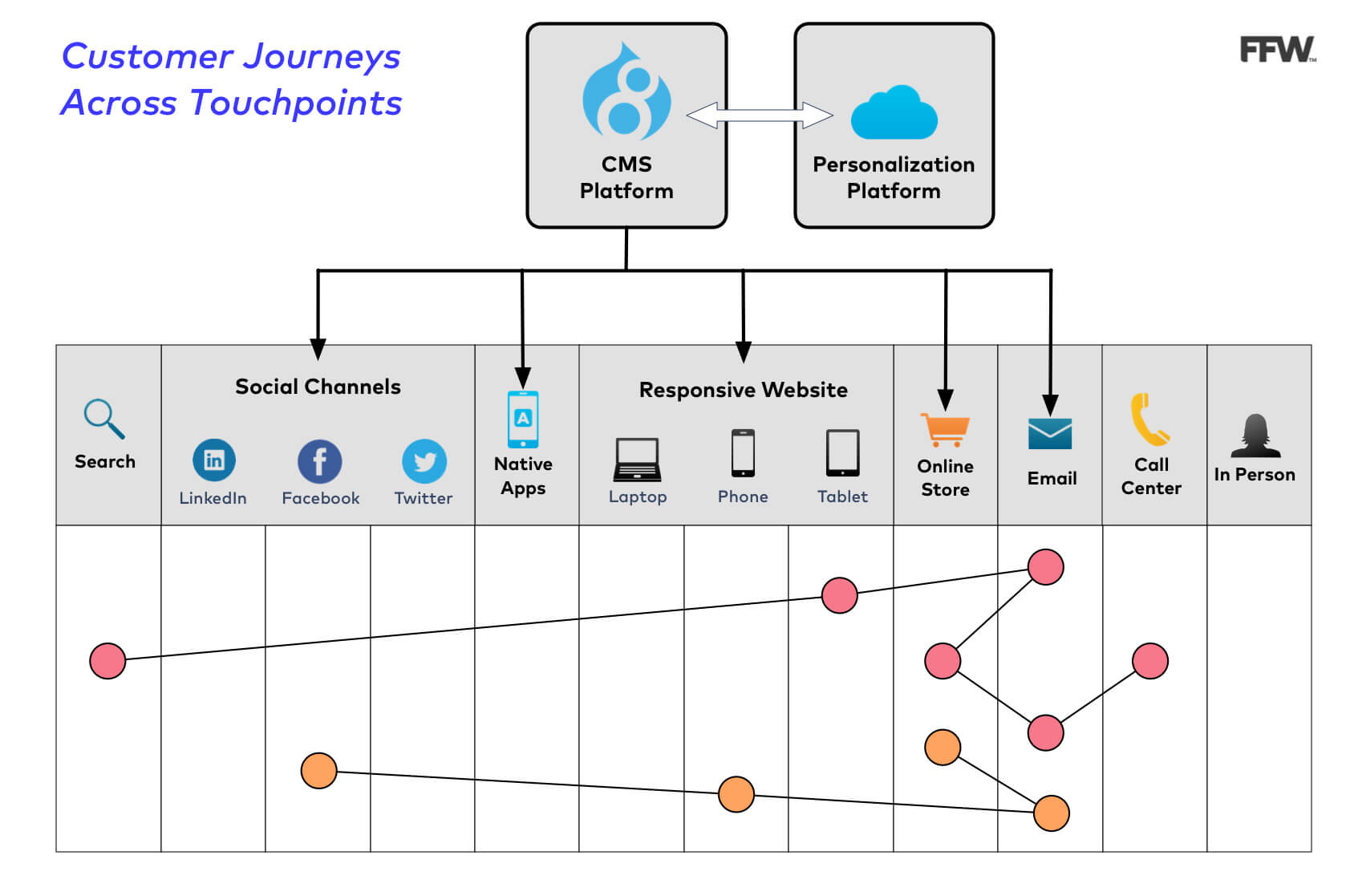Personalization Prerequisites: Understanding How Your Customers Engage
In order to produce quality content that is relevant to a specific type of customer, you first need to truly understand their interests and needs. In a personalization strategy, we examine this by mapping out the steps that similar types of customers take as they engage with your business.
In my previous post in this blog series, I described how segmentation is used to personalize experiences based on the context of the visitor. With visitor segmentation, you can gain valuable insights into how distinct subsets of your audience respond to personalized content. But in order to produce quality content that is relevant to a specific type of customer, you first need to truly understand their interests and needs. In a personalization strategy, we examine this by mapping out the steps that similar types of customers take as they engage with your business.
The Customer Journey
A customer journey describes the full set of steps that a specific type of customer takes as they move through the buying process and engage with your business over time. In mapping out customer journeys, we ask questions like:
- How do your customers find you?
- What do they want? What do they care about?
- Through what channels do they interact with you?
- What is their key evaluation criteria to make a purchase?
- What are their common pain points or frustrations?
- At what points are they dropping-off or bouncing?
Our goal is not only to define the steps along the customer journey, but to also identify the key factors that motivate them to engage further or move to the next step in the process. Therefore, a customer journey is broader in scope than a simple conversion flow or funnel; it represents the full lifecycle view of a customer’s interactions with your brand and encompasses all available channels through which they can engage with you.
The distinct steps along the customer journey are commonly referred to as touchpoints, which Wikipedia defines as "any way a consumer can interact with a business, whether it be person-to-person, through a website, an app or any form of communication."

Multi-Channel Strategy
Given that touchpoints exist across channels, a personalization solution should be implemented in a multi-channel strategy for it to be truly effective. Of course, a customer isn’t just visiting your website. Perhaps, the more complete picture looks something like this:
- Customer does a search on Google and clicks through to a page on your website while using their tablet device.
- They browse several pages which are formatted for their tablet and sign up to receive your email newsletter.
- The following day, while checking their email on their phone, they receive an email from you which contains a link to a special offer. They tap the link which takes them to your online store.
- They browse your store, add several products to their cart, and make a purchase, which results in an email receipt being sent.
- Later, they call your call center to make an inquiry about their order.
Drupal is an ideal platform for personalization because it fits well into the scenario above and allows its content to be used across channels. Content within a Drupal site can be pushed to a native mobile app, a Facebook application, an email newsletter, and across product landing pages or microsites, for example. This makes it possible to personalize and optimize the user experience across channels and to gain a more complete picture of the customer’s journey.
Conclusion
Personalization is all about delivering the most relevant content to a specific visitor at a specific time. So, it's important for any personalization strategy to include a clearly defined customer journey which describes not only how they engage but the channels that they engage through.
By analyzing the customer experience at each individual touchpoint, we are able to identify where personalization and other optimizations can leveraged to improve results. Ultimately, the name of the game is to help customers make the right purchasing decisions based on their particular needs at a given time.
What’s Next?
With real-time personalization, we use targeted content and messaging to increase the likelihood that the user will make the decision to convert. But this means that variations of content must be produced and designed for each segment and across channels, which can be quite a lot of work. In my next blog post, I'll describe the elements of an effective content strategy for personalization to address this challenge. You can also skip the series and go straight to my eBook, The Basics of Real-Time Personalization. It has all the content shared in the blog, and more.
